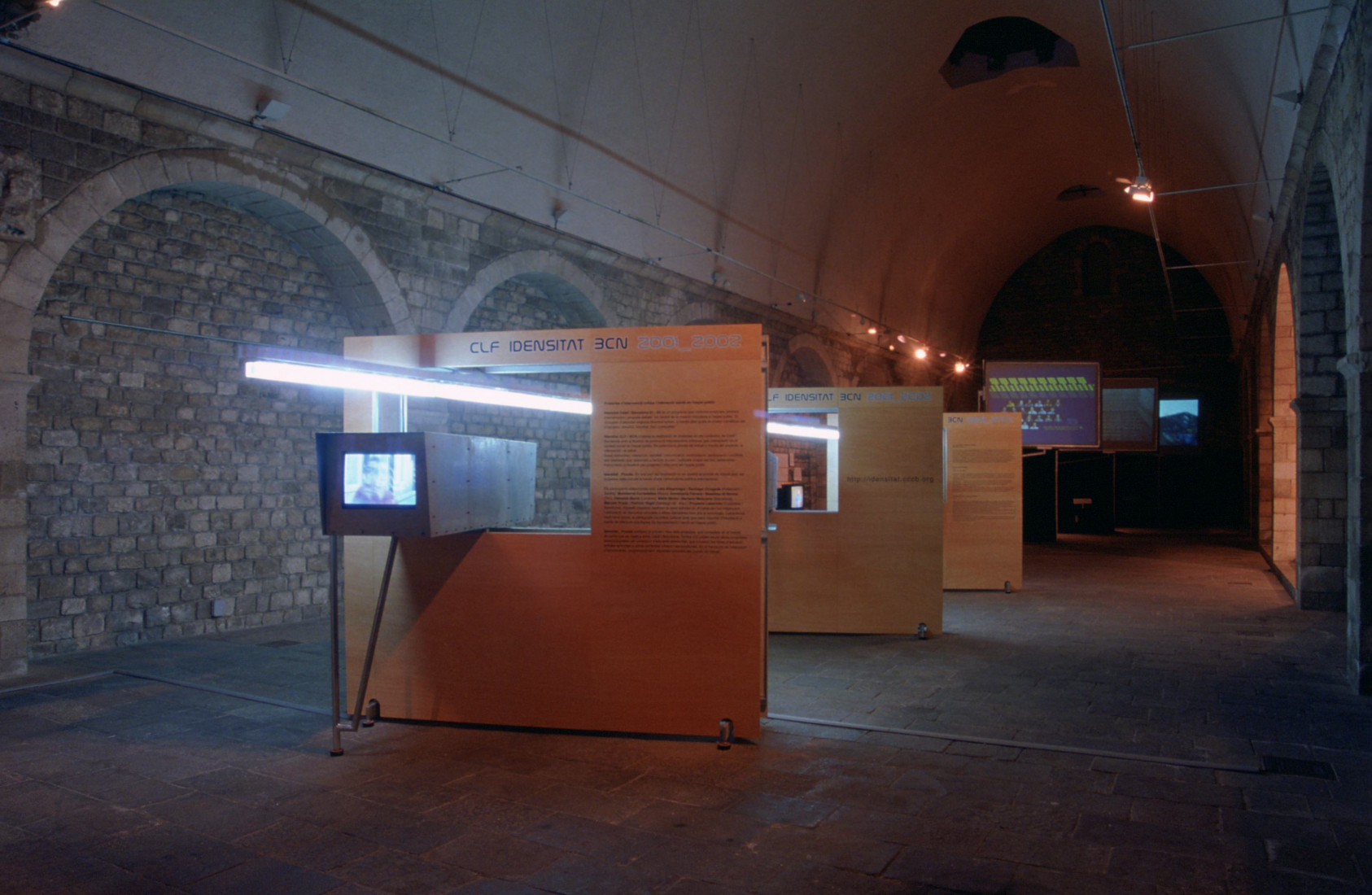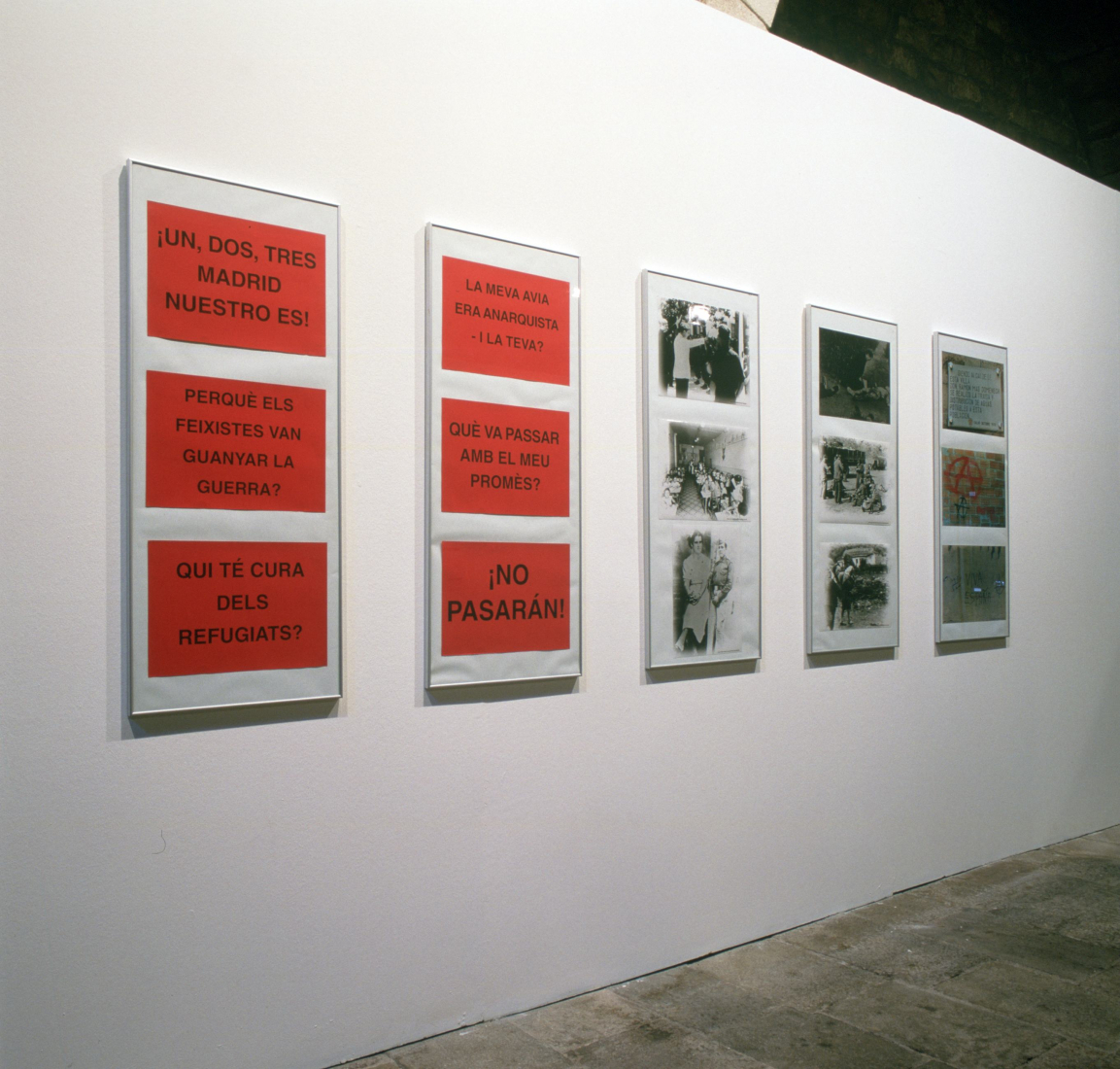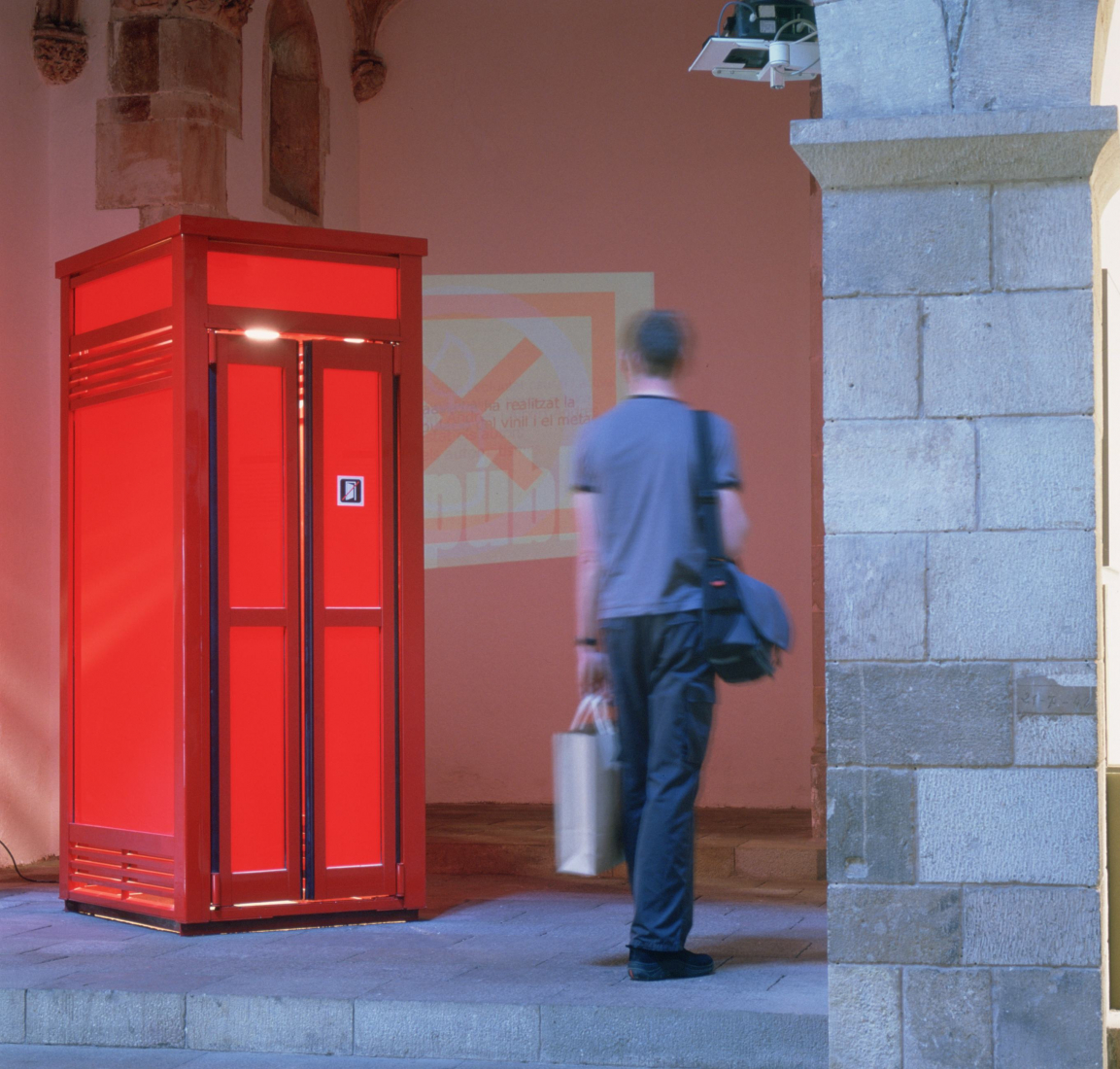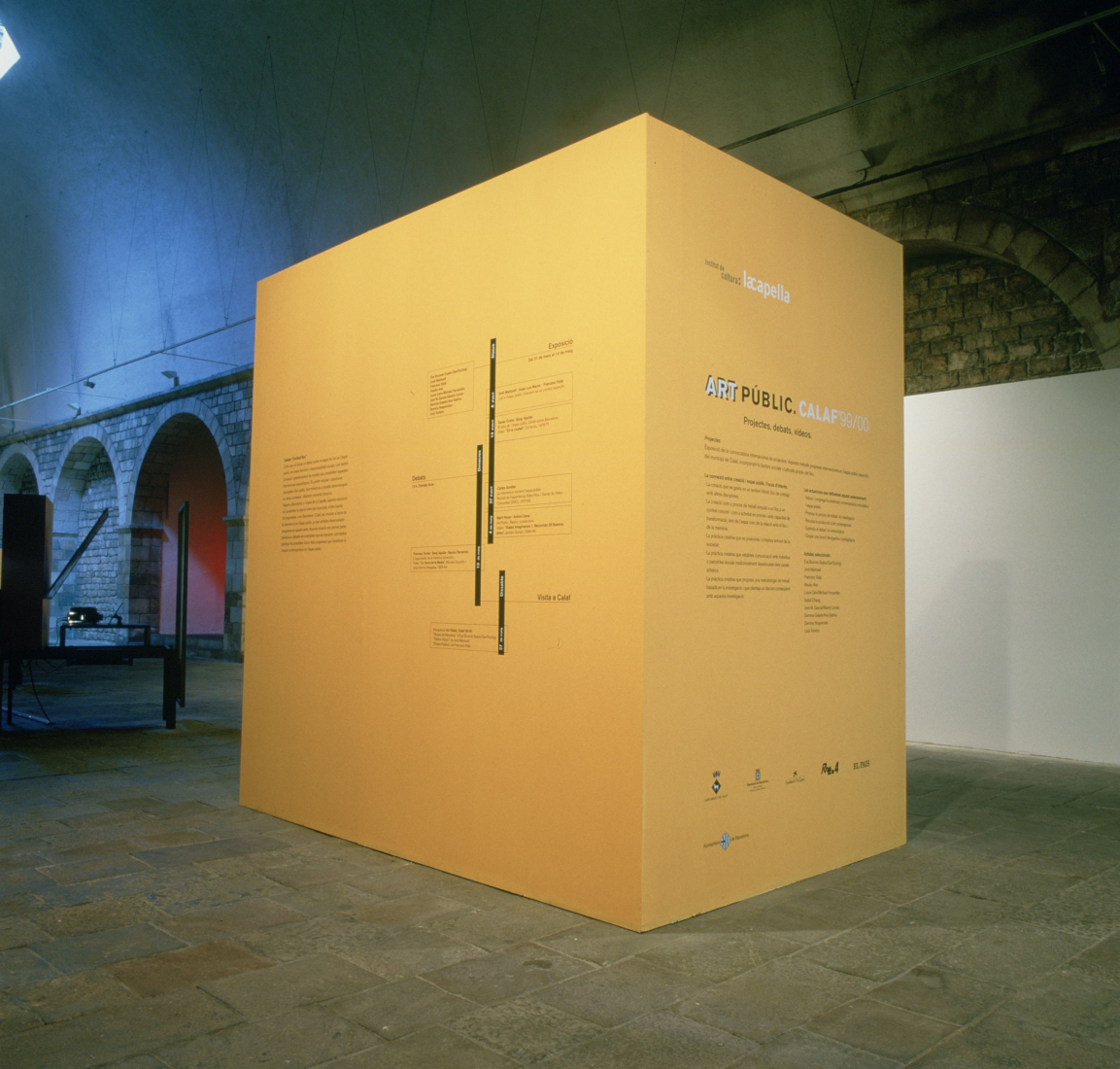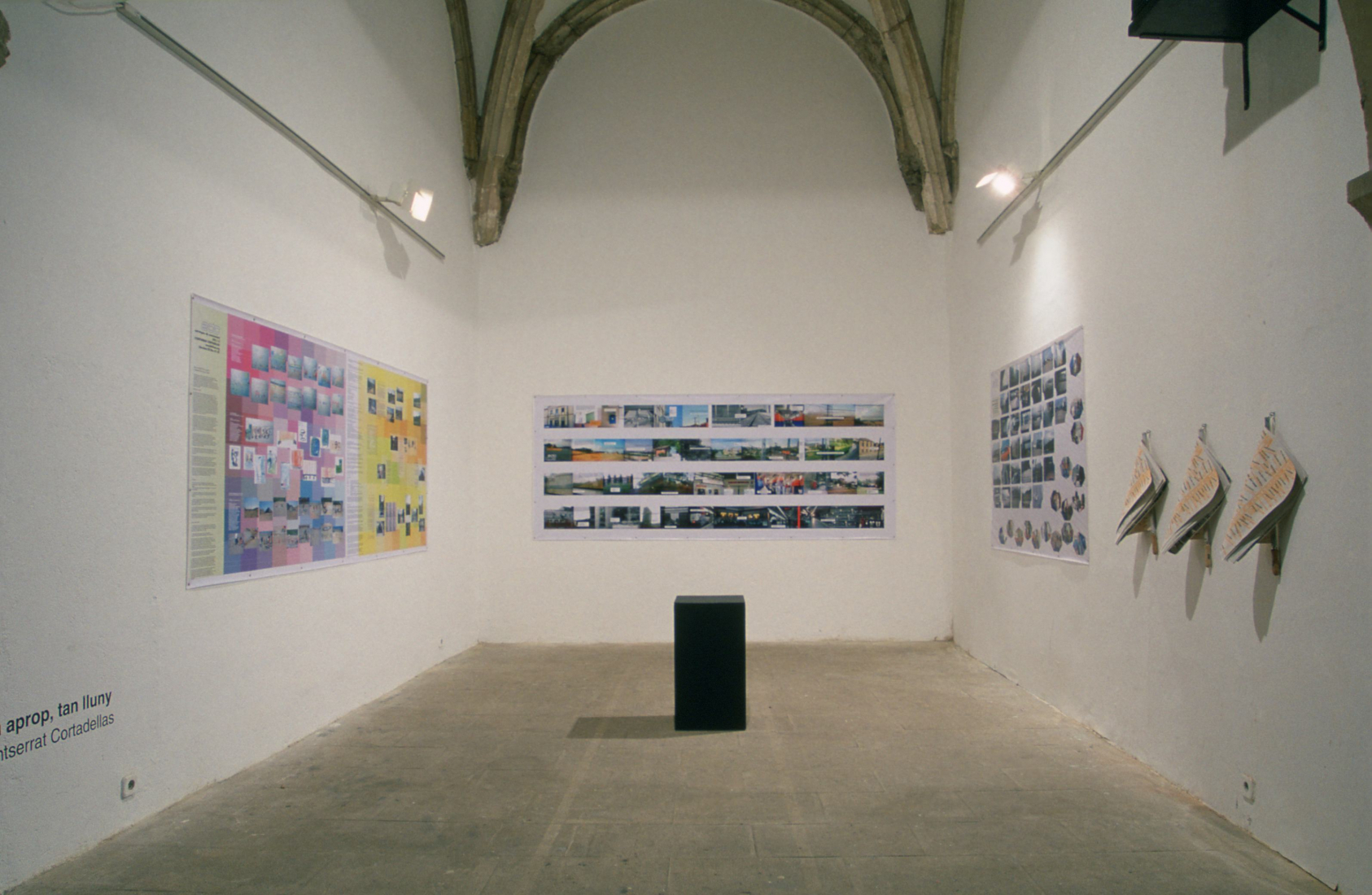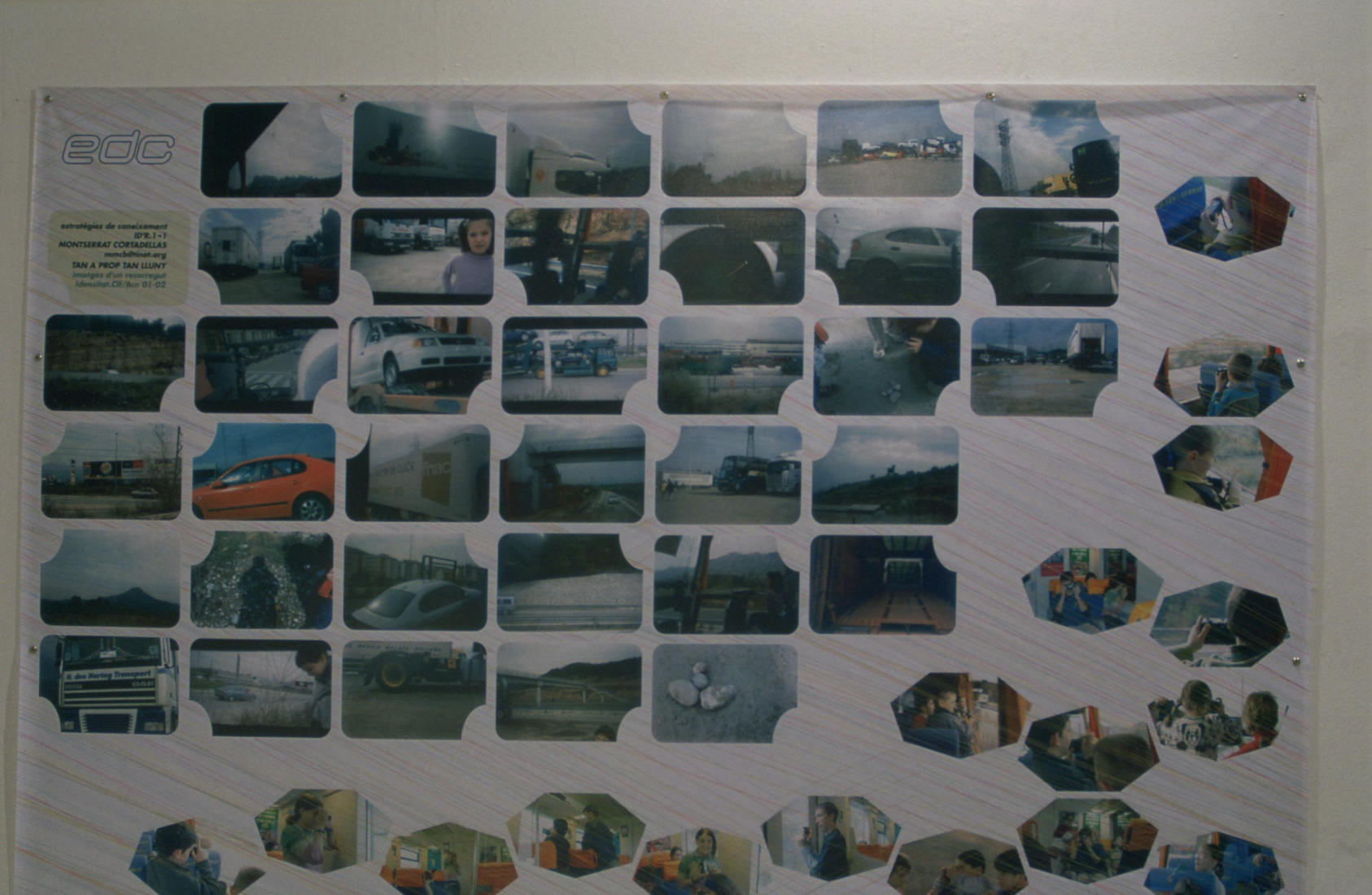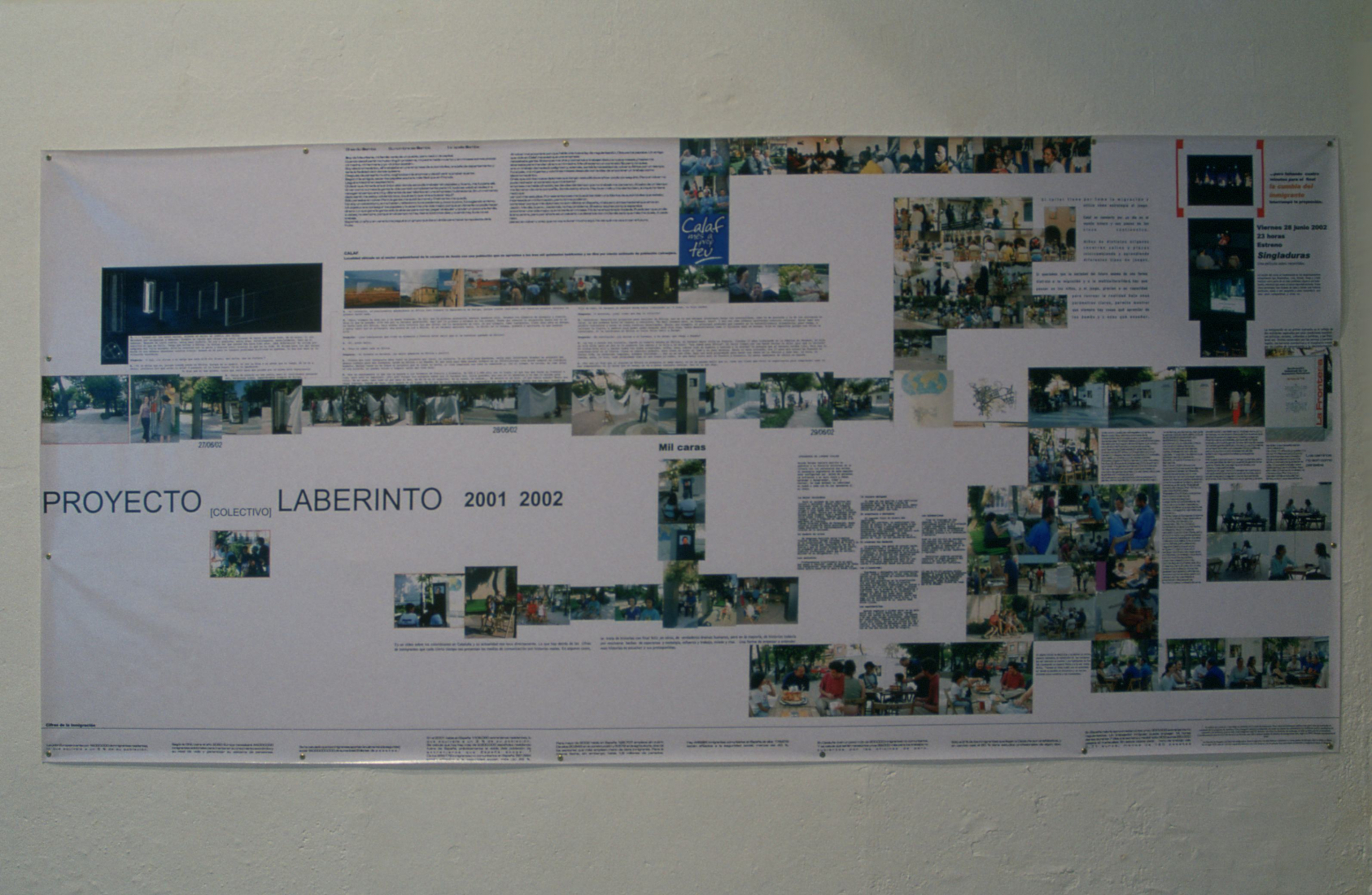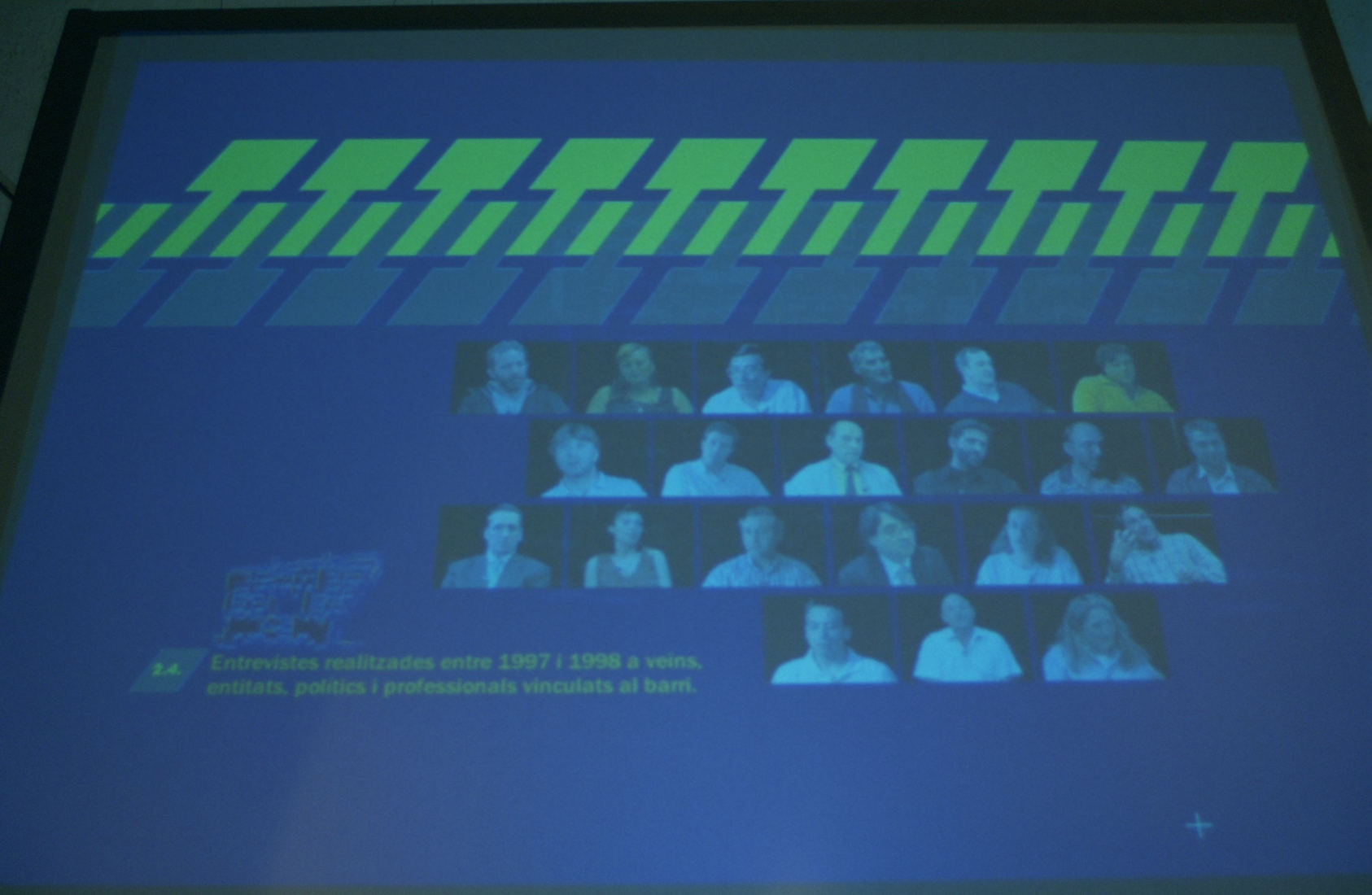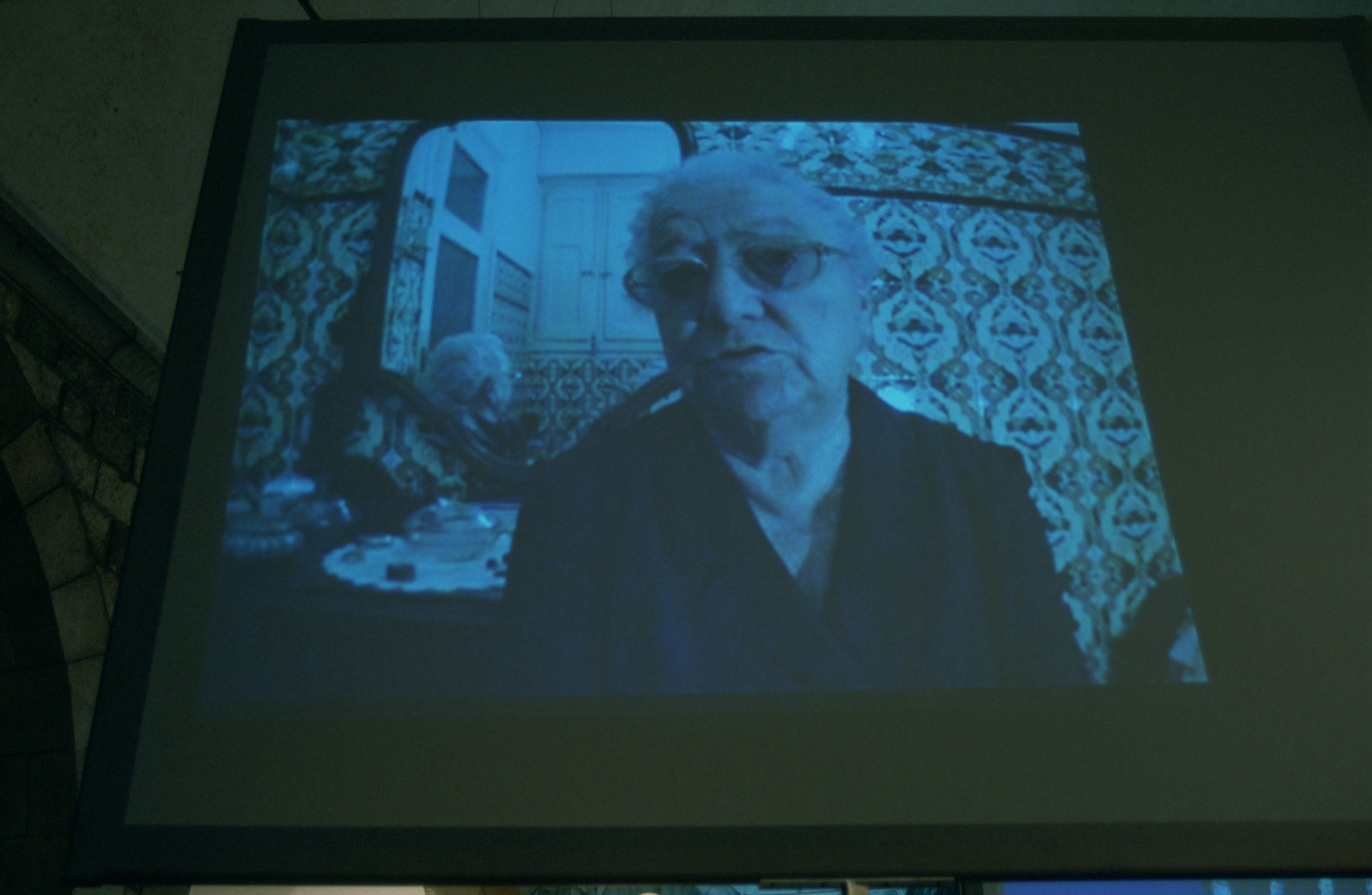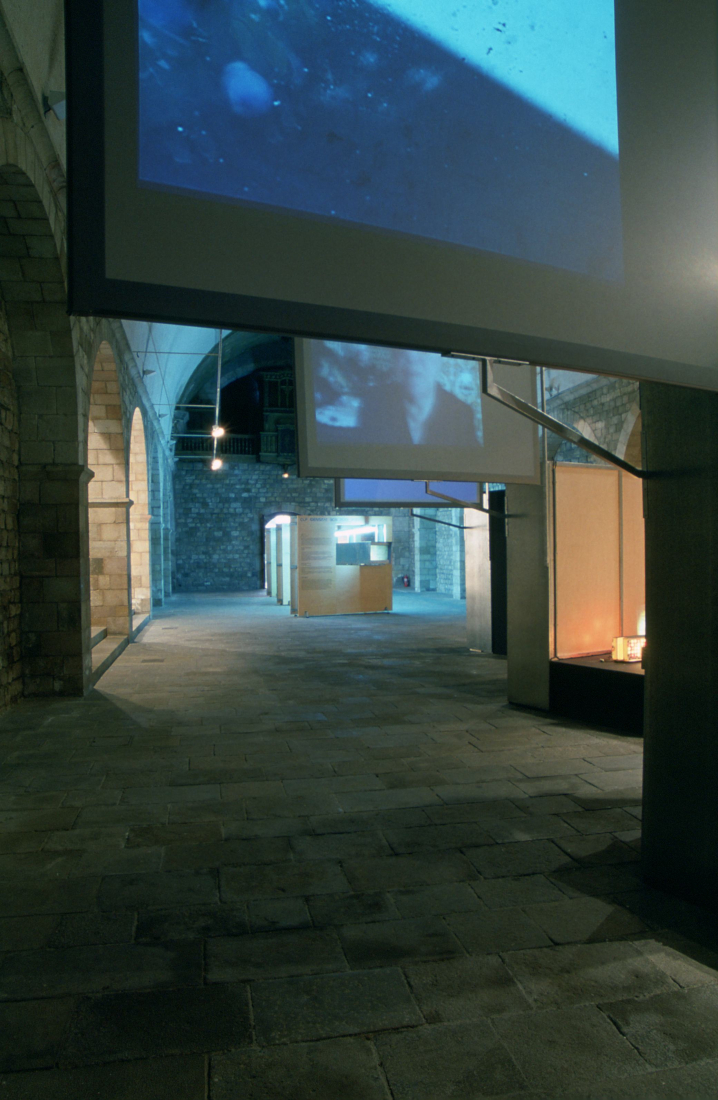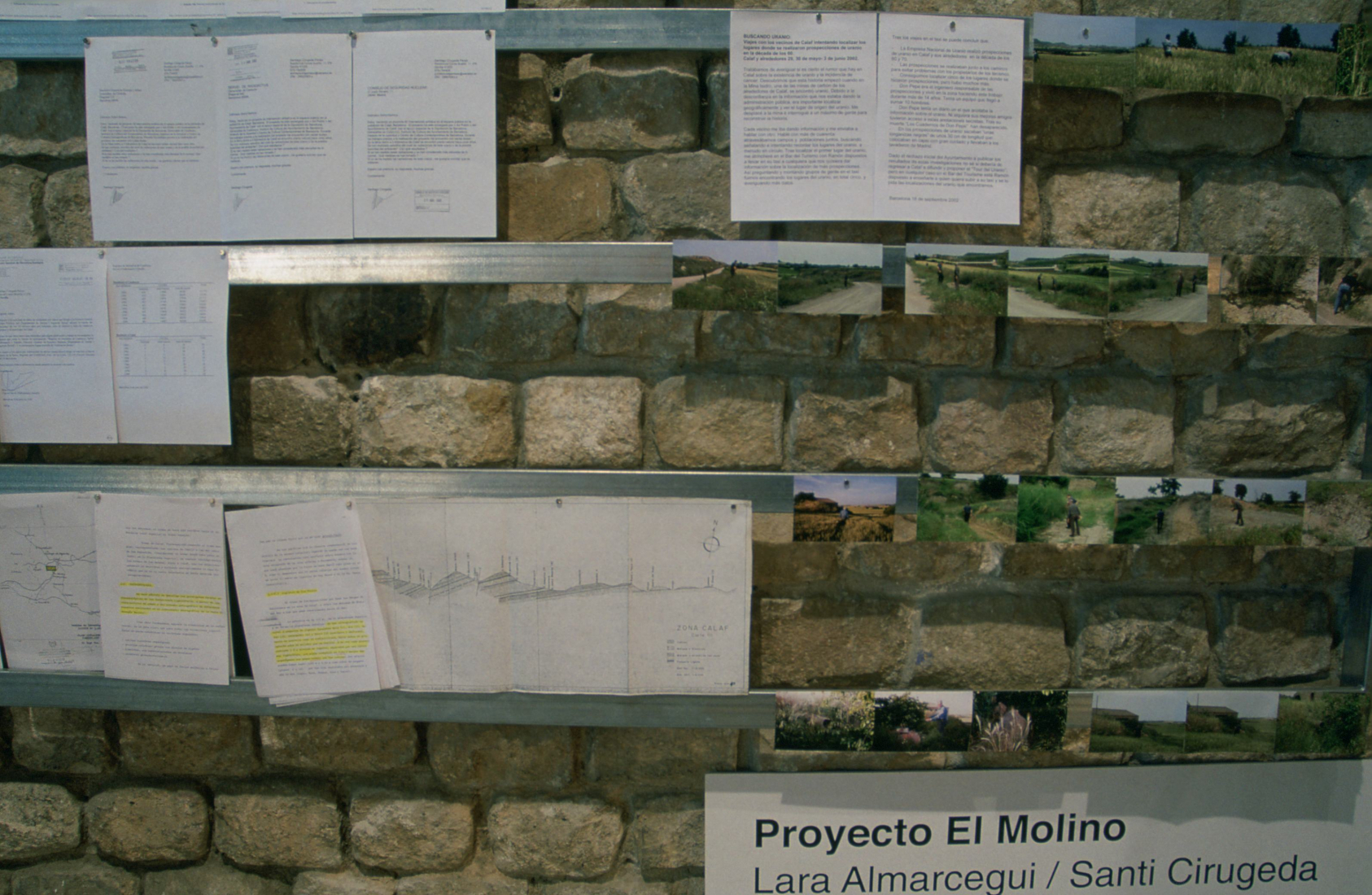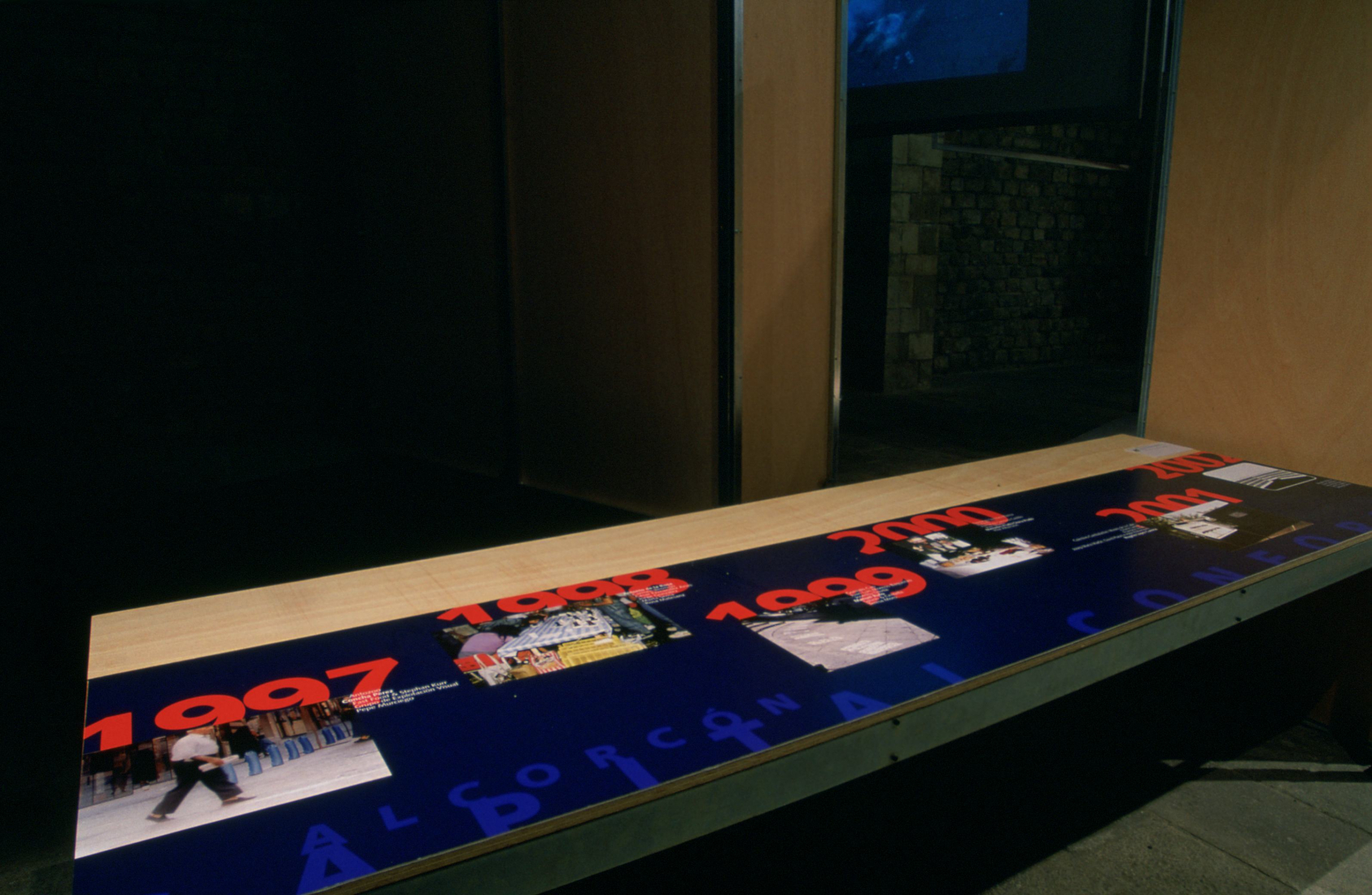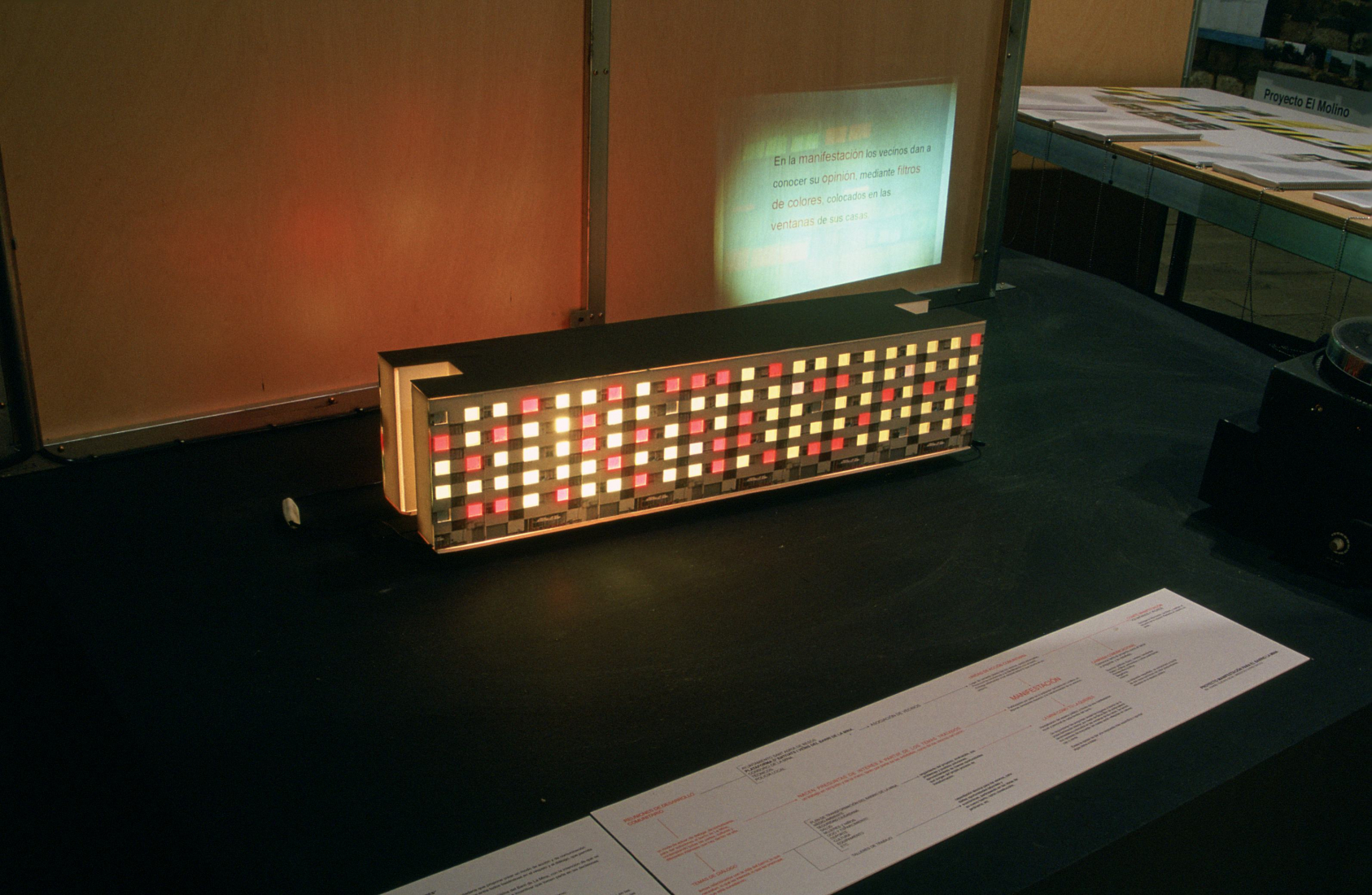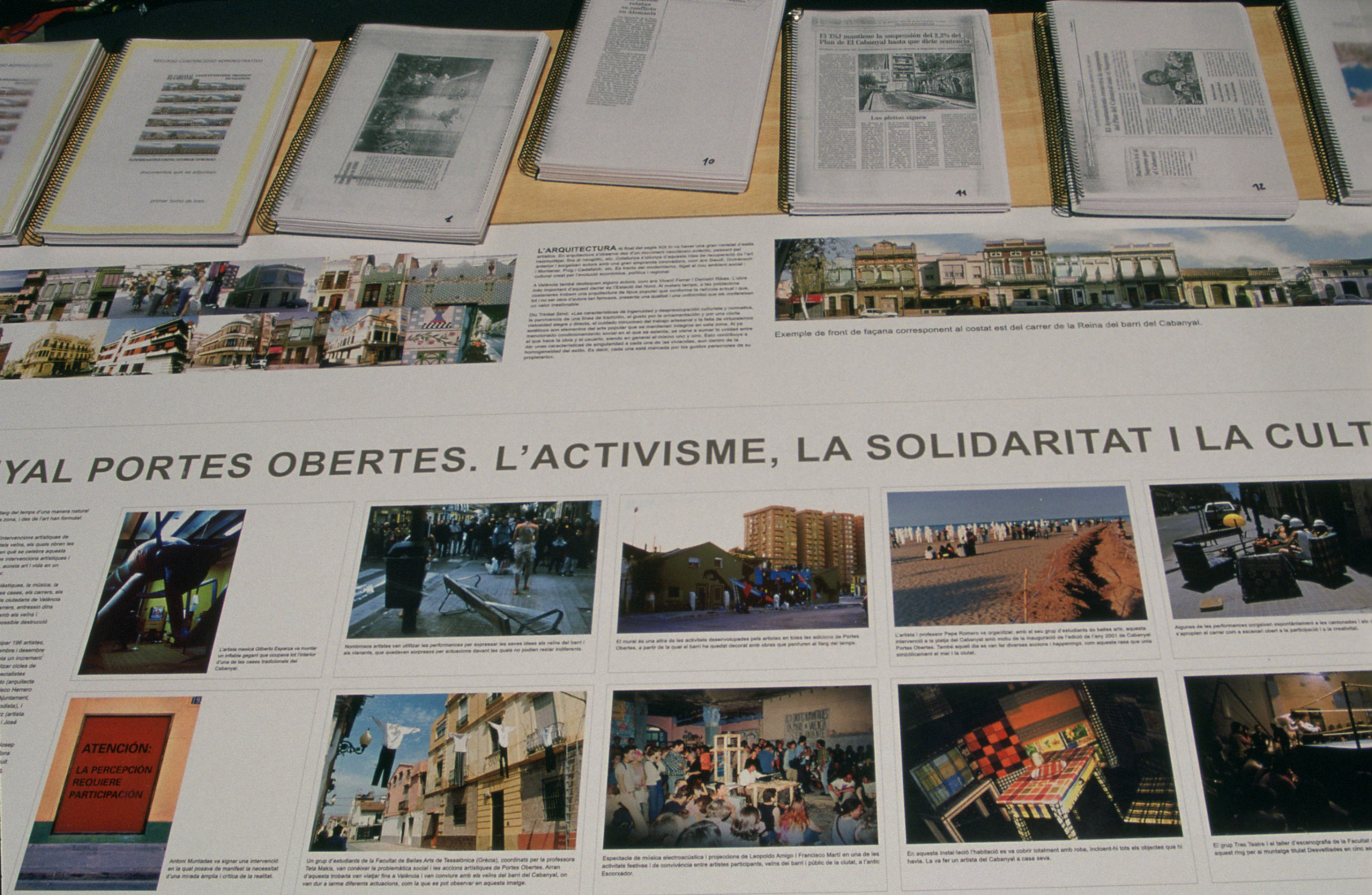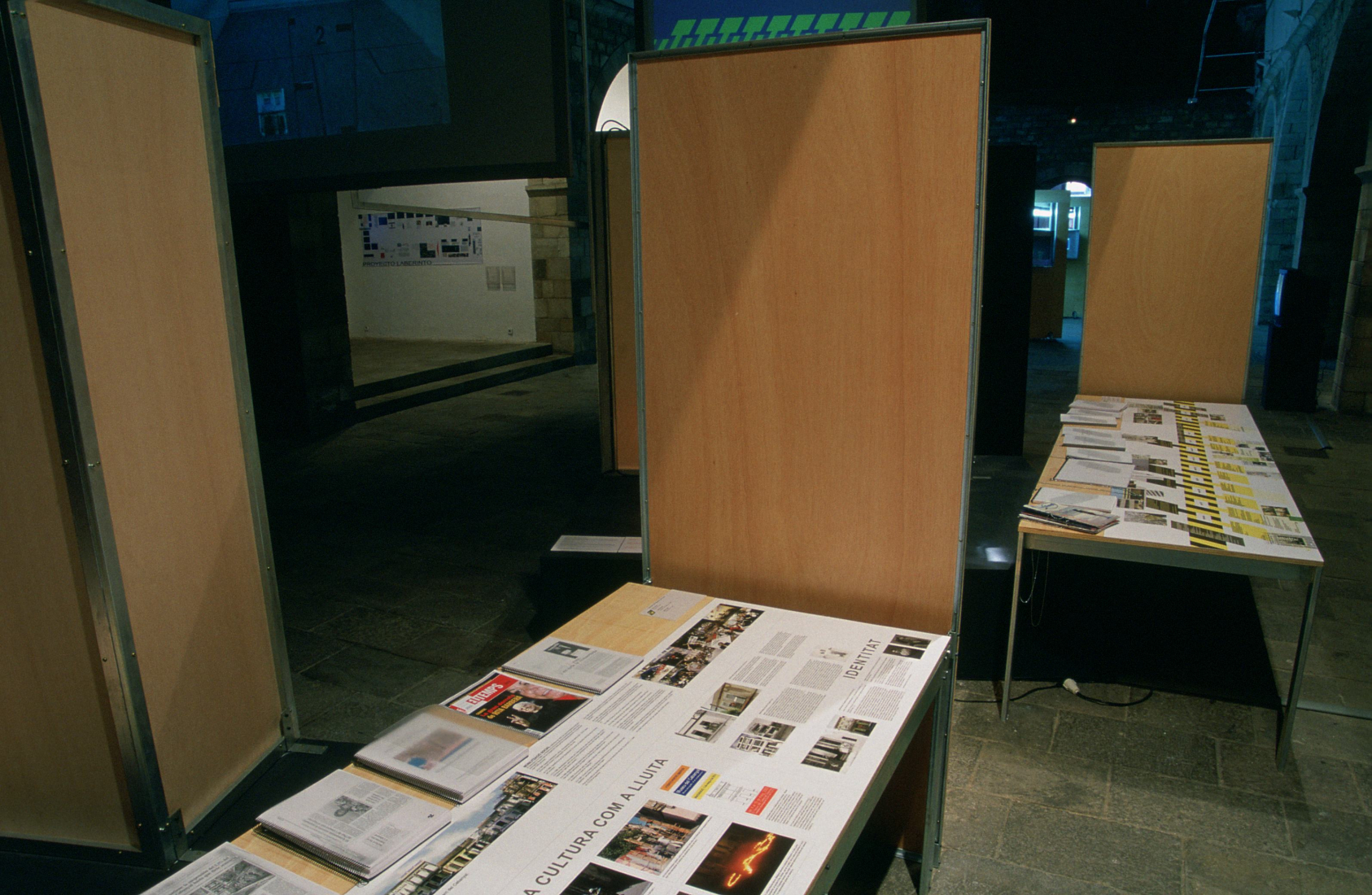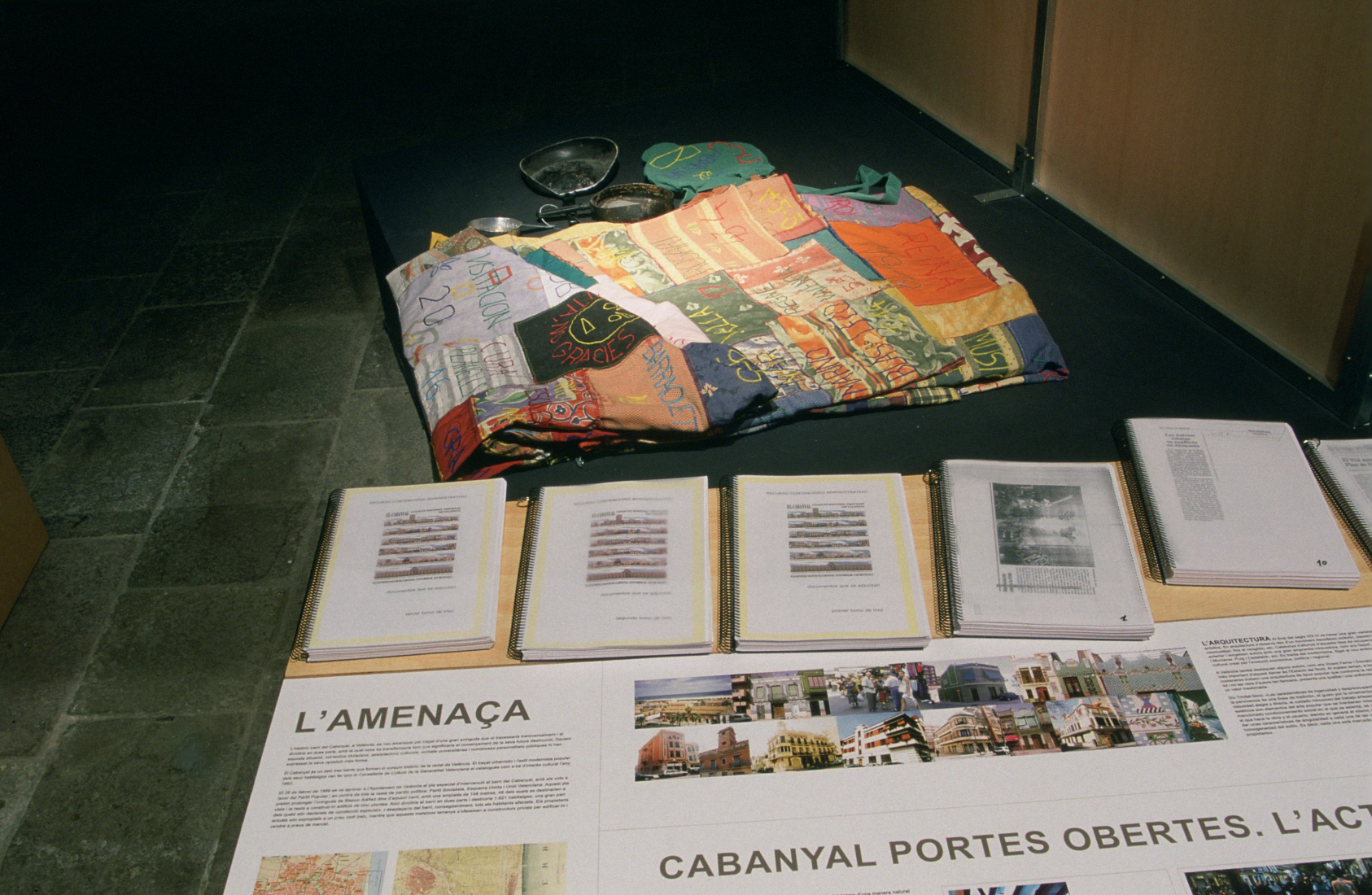Idensitat Calaf Barcelona 2002
Exhibition and debates on strategies for representation and participation in the public space
Within the current chaos that reigns in what we know as public art, Idensity is a programme promoting artistic practices as part of a series of complex activities that can influence the social space from a critical perspective, with a positivist functionality and clear interaction in the place.
To speak of programme means speaking of a working process projected in time, an immersion in the place and the possibility of developing a project in an area of the public space which interacts in the social sphere. Idensity makes it possible from the art world to create projects, research, images, constructions, strategies, situations, etc, in a highly plural and open sense, but also with a very specific purpose: to renegotiate the role of art in the context of all the activities forming part of the multiple realities that surround us.
To make possible means to acquire a degree of implication in which the relations of exchange within the shaping dynamic of reality activate situations of real change.
When art intervenes in the public sphere, we enter a dynamic placing it parallel to other services. No one would dream now of questioning that the public institutions should provide citizens with services covering their needs as regards education, health, welfare, etc. And culture should be seen as one of these needs. Moreover, certain institutions or specific programmes should ensure the existence of projects consistent with these responsibilities. Art that seeks to be public should assume the corresponding responsibility.
The Idensity project, first launched in Calaf and later extended to Barcelona, has promoted proposals for intervention which work in this direction from a hybrid, transversal artistic viewpoint. The basic commitment is that the work should become a motor activating the work in progress, that it should be adaptable to circumstances created by the time and place, and that it should consolidate a type of practices implied in the social reality over long time periods. It must have to do with the concept of intervening in the public space from a critical viewpoint and a vision of social engagement, promoting a work process involved in the territory, encouraging public participation, pointing to conflicts in the local community, and exploring memory and identity linked to the place and the activity which takes place in it.
The exhibition presented at La Capella consists of three separate sections: process, projects and connections. The first two correspond to two different moments in the Idensity project, whilst the third links to other contexts and other specific social realities. In this case, the connection has been extended to include other groups organising activities in the field of contemporary creation and art and links have been established with social and community sectors engaged in urban construction, participation and representation.
IDENSITY - Process
The first part presents the work process followed by the seven projects selected in an international public call for proposals. This first stage in project development consisted of the fieldwork carried out between Calaf and Barcelona in September 2001. The aim was to facilitate communication amongst the participants and groups forming part of social processes established in the city. This exhibition section is built up parallel to development of the fieldwork, and different specific process aspects were gradually incorporated.
Lara Almarcegui and Santiago Cirugeda (Rotterdam/Seville), Montserrat Cortadellas (Reus), Annamaria Ferrero and Massimo di Nonno (Turin), Oswaldo Macià (London), Maite Ninou and Mariano Maturana (Barcelona), Marcelo Prado and Patricio Vogel (Santiago de Chile) and Proyecto Laberinto (Colombia/Barcelona).
IDENSITY - Projects
Presentation of the projects completed between September 2001 and September 2002.
Tan cerca, tan lejos (So Near, So Far) by Montserrat Cortadellas
With the cooperation and participation of pupils from the Alta Segarra and IES Alexandre de Riquer schools in Calaf. The work, which took the form of a workshop carried out throughout the academic year, was based on reinterpreting the visual messages we constantly and indiscriminately receive from our surroundings on journeys between Calaf and Barcelona.
Proyecto Laberinto (Labyrinth Project) by Colectivo Laberinto
Proyecto Laberinto arises from reflection on the migratory phenomenon involving a group of artists and social scientists from Colombia now living in Barcelona. The video Mil caras (A Thousand Faces) depicts the personal and social conflict entailed in migration in the form of an intimate account. It is also an invitation to play an active part in this project through workshops opened to immigrant groups.
Proyecto Molino de Calaf (Molino de Calaf Labyrinth Project) by Lara Almarcegui and Santiago Cirugeda
The project speculates on information processes which remain hidden in the public sphere. The work is based on the documentation and possible relation that any person can establish with institutions in order to access and obtain information of interest to the citizen that is not published in the media.
IDENSITY - Connections
Three specific experiences which actively participate in specific territorial spaces. Two inverted yet complementary concepts are proposed, based on participation and representation linked to the specific nature of the place.
Urban participation / Cultural representation
This section is devoted to the experience of the Plataforma de Entidades and Vecinos de La Mina (La Mina Platform for Associations and Residents) in Sant Adrià de Besòs (Barcelona). This platform is a social movement bringing together associations and residents working in La Mina district to promote strategies for participation with regard to town planning projects affecting the area. The work it carries out exemplifies the idea of specific organised social sectors promoting active alternatives based on community organisation and participation. A process constituting a form of cultural representation based on the experience and knowledge that comes from living in a specific place.
Cultural participation / Urban representation
This section presents the project Capital Confort (Capital Comfort), an initiative launched by the El Perro Collective in 1997 in Alcorcón (Madrid). Capital Comfort is an experiment in which art attempts to influence socio-cultural factors by acting in that public space which is the street. Taking the work developed by various invited artists, urban representation strategies are formulated, based on cultural stances and discourses that take shape in the public space.
The hybrid component exemplified in the point of merger between the two concepts is embodied in the project launched by the Plataforma Salvem El Cabanyal (Save El Cabanyal Platform). This is a platform of residents in El Cabanyal (Valencia), where a development plan threatens the district's historic identity. One of the initiatives implemented by the association in its attempts to counter and stop the development action from going ahead is the Cabanyal Open Day, at which invited artists develop their own proposals, projecting and promoting the platform's demands. Urban participation and representation and cultural participation and representation inseparably intertwined.
Patrocina: Caja Madrid. Obra social
Mitjans de comunicació patrocinadors: El País i Ràdio 4
Col·labora: Schilling



